KhrisDigital is supported by readers like yourself. We may earn a commission when you purchase through our links (at no extra cost to you).
Trying to choose between ClickFunnels and Kajabi? If you’re building an online business, there’s a good chance you’ve looked at both and felt stuck.
Yeah, I’ve been there, and not just once. Since 2018, I’ve been deep in both platforms, building sales funnels, selling courses, testing upsells, and figuring out what works (and what doesn’t).
And let me tell you: they’re both powerful. But they’re very different.
So, if you’re stuck wondering which tool is right for you, I understand. It’s not just about features; it’s about which one helps you grow faster, makes your life easier, and fits the way you do business.
In this ClickFunnels vs Kajabi comparison post, I’ll give you the real deal: how ClickFunnels and Kajabi stack up after years of hands-on use. No fluff. Just honest insights from someone who’s lived inside both.
By the end, you’ll know which one fits your style, your goals, and your customers.
ClickFunnels vs Kajabi at a Glance
| Features | ClickFunnels | Kajabi | Winner |
|---|---|---|---|
| Free Trial | 14-days free trial | 14-days free trial | Tie |
| Starting Price | $97/month billed monthly | $89/month billed monthly | Kajabi |
| Advanced Funnel Builder | Powerful and flexible with upsells, downsells, logic | Basic linear pipelines | ClickFunnels |
| Course Creation | Basic, no quizzes or tracking | Robust, structured, includes quizzes and progress | Kajabi |
| Membership Hosting | Works, but less polished | Clean, smooth, fully integrated | Kajabi |
| Page Editor | Highly customizable, flexible | Clean, but limited customization | ClickFunnels |
| Website Builder + Hosting | Includes website/blog capabilities | Full site builder with blog, podcast, SEO tools | Kajabi (by a bit) |
| Advanced Email Features | Multi-step, multi-channel automations | Clean visual builder with behavior triggers | ClickFunnels |
| Template Library | Tons of conversion-focused templates | Sleek but limited variety | ClickFunnels |
| Smart Automations | Complex logic, multi-platform | Simpler, directly tied to user behavior | ClickFunnels |
| AI Tools | Funnel copy & content assist | Creator-focused AI tools (pages, emails, outlines) | Kajabi |
| Affiliate Management | Advanced for multi-tier affiliate systems | Simple affiliate tracking | ClickFunnels |
| A/B Testing | Built-in, easy to test anything | Not available | ClickFunnels |
| Analytics | Advanced funnel stats, split test data | Clean, easy-to-read performance insights | ClickFunnels |
| Integrations | Extensive, flexible, dev-friendly | Curated list + API & Zapier | ClickFunnels |
Why You Should Listen to Me (I’ve Been in Both Worlds Since 2018)
Back in 2018, when I first stumbled into the world of sales funnels and digital products, Kajabi was one of the first platforms I used.
At the time, it felt like magic, smooth course hosting, clean design, and the simplest way to launch a membership site.
Honestly, it was the go-to for creators.
However, as the years passed, other platforms emerged with flashier features, deeper automations, and more competitive pricing. Kajabi had to fight to stay relevant, and it’s been interesting watching how they’ve evolved.
ClickFunnels, on the other hand, was the king of funnel builders. I’ve used it heavily, built multiple funnels, sold products, and even won contests and been featured on their platform.

I’ve been all-in on that side of the game, too. I’ve seen ClickFunnels at its peak and watched as newer, more affordable tools began to chip away at its market share.
So yeah, I’ve been in the trenches with both.
I’ve launched, tested, succeeded, and failed on each platform. And I’m not here to hype one over the other, just to give you the truth from someone who’s used both for over half a decade.
Key Takeaways:
Go with ClickFunnels if you’re focused on sales funnels, upsells, and conversion-heavy marketing. Choose Kajabi if you’re a course creator, coach, or community builder who wants an all-in-one platform to teach and grow without tech headaches. Both offer free trials, allowing you to test and determine which one best fits your business needs.
A Quick Overview of ClickFunnels vs Kajabi.
We shall be starting with ClickFunnels.
What is ClickFunnels?
I still remember the first time I stumbled on ClickFunnels back in the day, it felt like finding a cheat code.
No coding, no developers, no duct-taping 10 different tools together. Just drag, drop, launch.
ClickFunnels was launched in 2014 by Russell Brunson and Todd Dickerson, and it took off quickly.
What started with a few hundred beta testers rapidly grew into a juggernaut with over 150,000 users and more than $265 million in annual revenue. It’s still the most recognized name in the funnel-building game, owning nearly 56% of the market.
Most of its users? Small businesses and solopreneurs like you and me. Folks who want to build sales funnels, sell products, and automate follow-ups without the tech headaches.
What You Can Do with ClickFunnels?
Here’s what makes ClickFunnels such a powerhouse (and why so many still swear by it):
- Build funnels with an easy drag-and-drop editor, no coding required.
- Use proven, pre-built templates for sales pages, webinars, memberships, product launches, and more.
- Run your email marketing, follow-ups, and automation all in one place
- Accept payments, upsell, down-sell, and optimize checkouts
- Launch your affiliate program with Affiliate Center.
- Run A/B tests, track performance, and see what’s working, and what’s not
What I Love About ClickFunnels
- Extremely fast to launch, you can have a funnel up and running in a day.
- No tech skills needed, the builder’s super beginner-friendly
- All-in-one platform — funnels, emails, affiliates, checkouts… It’s all there
- Proven templates built by marketers who know what converts
- Massive community and support — tutorials, contests, events, groups
- Integrated affiliate system if you want others promoting your stuff
What I Don’t Like About ClickFunnels
- It’s pricey, especially if you need the complete feature set
- Templates can feel limiting if you want complete creative freedom
- Newer, more affordable tools are starting to catch up
Who Should Use ClickFunnels?
ClickFunnels is made for action-takers. If you’re an:
- Entrepreneur or course creator who wants to launch fast
- Coach or consultant selling offers, services, or webinars
- Digital product seller building high-converting sales pages
- Or someone who wants everything in one place, no tech drama
…it’s still one of the best platforms for quickly and profitably getting your product out there.
What is Kajabi?
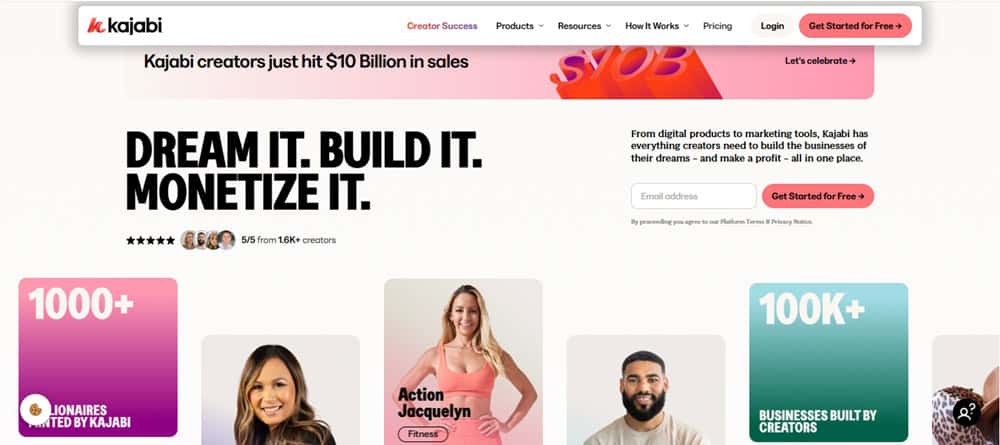
Kajabi was the first platform I used when I started exploring funnels and digital products in 2018.
I was figuring things out, and Kajabi felt like a gift, clean design, everything in one place, and no tech overwhelm. It made me feel like, “Okay, I can actually do this.”
It was founded in 2010 by Kenny Rueter, Travis Rosser. Founded 4years earlier before ClickFunnels was birthed.
Fast forward to today, and Kajabi has become a powerhouse for creators. Over 51,000 people use it in more than 138 countries, and together they’ve generated over $10 billion in sales.
That’s not small change, that’s proof Kajabi works for coaches, course creators, and digital product businesses at every level.
And unlike many other tools, Kajabi is laser-focused on the needs of creators. It’s not trying to be everything to everyone, it’s built to help you teach, sell, and grow your brand without juggling 10 different tools.
What Kajabi Can Do
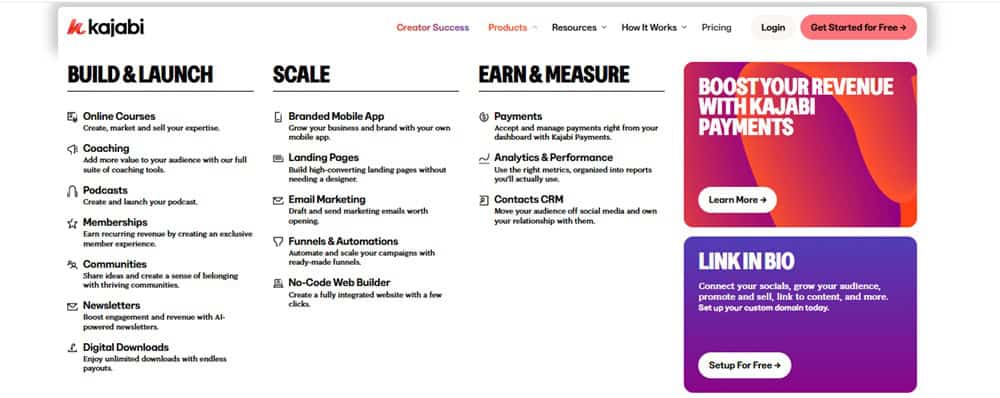
You can think of Kajabi as your all-in-one digital business hub. It lets you:
- Create and sell online courses, coaching, podcasts, and memberships
- Design your website, landing pages, and funnels (aka pipelines) without touching code
- Run automated email sequences and customer journeys
- Track student progress, course engagement, and revenue with built-in analytics
- Launch offers, take payments, and even run your affiliate program
- Use new tools like AI content creation and Kajabi Payments to save time and stay streamlined
What I Love About Kajabi
- Everything’s under one roof, you don’t need a separate email tool, course host, or CRM.
- Built for creators so, it understands how people like us work
- It scales with you, whether you’re just starting or running a six-figure brand
- Excellent community features — think quizzes, progress tracking, and member areas
- Real success stories with tons of creators hitting six figures without a massive audience
- Constantly improving with new AI tools, payments, and features that keep up with trends
What I Don’t Like About Kajabi:
- It’s not cheap, especially if you’re testing the waters
- Design freedom can feel boxed in because you work within templates unless you get fancy with code.
- If you’re super hands-on with customization, you might find it a bit restrictive.
Who Should Use Kajabi?
If you’re a coach, course creator, or digital product seller who wants a clean, professional platform that works, Kajabi is your tool.
It’s especially great if you:
- Want your marketing, content, and payments handled in one place
- Don’t have time to stitch together a dozen apps
- Care about customer experience just as much as your content
- Are looking to grow into a full-time business, not just a side hustle
Kajabi vs ClickFunnels: Which One’s Easier to Use?
Let’s be real, when you’re launching a business, the last thing you want is to spend hours just trying to figure out how to use the tool that’s supposed to help you.
I’ve used both Kajabi and ClickFunnels for years, and while they both promise “no tech headaches,” they go about it in entirely different ways.
Kajabi feels like slipping into a well-organized workspace. Everything is clean, modern, and well-organized. You don’t have to hunt for buttons or guess where things live. Perfect if you like structure, simplicity, and a more “Apple-like” experience.
ClickFunnels, on the other hand, is more like a marketer’s playground. It gives you a ton of flexibility, but that can also mean more moving parts, more tweaking, and a steeper learning curve up front. Great if you love testing, tinkering, and optimizing funnels like puzzle pieces.
So, which one’s easier?
If I had to crown a winner here, Kajabi takes the trophy for ease of use. It’s smoother, more intuitive, and way more beginner-friendly. You can log in, build a course, send emails, and set up automations without ever feeling lost.
Here’s how I see it, from someone who’s lived in both dashboards…
ClickFunnels vs Kajabi: Features Comparison
Advanced Funnel Builder: Who Gives You More Control?
If you’re someone who wants to map out multi-step funnels, test variations, control every part of the buyer journey, and stack upsells, downsells, order bumps, and email sequences like a puzzle… you’re gonna notice a difference here.
ClickFunnels was literally built for this. It’s the OG funnel builder. You can drag, drop, split test, add timers, customize paths based on behavior, and even build full product launches from scratch.
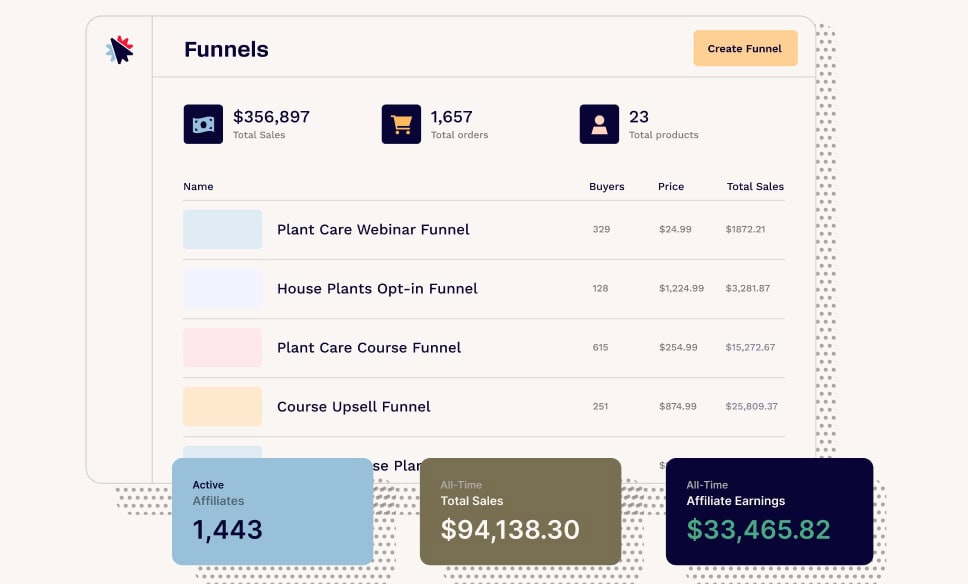
It’s flexible, a little chaotic at times, but super powerful once you get the hang of it.
Kajabi does let you build funnels (they call them “pipelines”), and they’re clean and beginner-friendly, but they’re much more linear and template-based.

You can’t go wild with branching logic or fancy triggers. It’s excellent for simple journeys like lead magnet → email series → course offer… but that’s about it.
No question here, if you want total control and an advanced funnel strategy, ClickFunnels crushes it.
Advanced Course Creation: Who Gets the Student Experience?
When it comes to building and delivering online courses, there’s a vast difference between simply uploading videos and creating a learning experience that your students want to complete.
Kajabi is hands-down one of the smoothest course builders I’ve ever used.
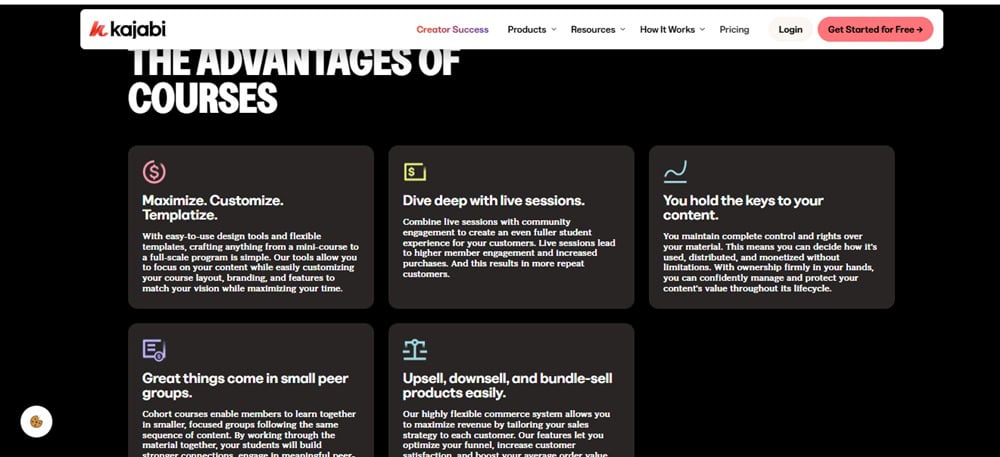
From structured modules and lesson progress tracking to quizzes, assessments, student comments, and automated “congrats” emails. It’s designed for real educators and coaches. You can even drip content, track engagement, and give completion certificates.

It just feels like a platform that gets online learning.
ClickFunnels? It can host a course, technically. You can build a course area using their membership site builder and gate content behind purchases.

But it’s clunky by comparison. It feels like it was added as an afterthought, rather than being a primary use case. There’s limited interactivity, no quizzes, and no real tracking, so students don’t get the polished experience that Kajabi delivers out of the box.
If your business revolves around teaching, or guiding students through real transformation, Kajabi is light-years ahead.
Professional Membership & Course Hosting: Who Feels More Polished?
If you’re selling a course or membership, presentation matters. You want your content to look clean, flow smoothly, and make your members feel like they’re inside something premium, not some DIY duct-taped mess.
Kajabi nails this. From the moment someone logs into your member area, it just feels pro. The layout is sleek, lessons are organized beautifully, and everything works seamlessly on mobile and desktop.
You’ve got options for community, comments, drip content, and even built-in coaching tools. It’s your own branded learning portal, no plugins or hacks required.
ClickFunnels, on the other hand, does offer membership site capabilities, but they feel clunky in comparison. You have to build the pages manually, organize access with custom logic, and the overall experience isn’t nearly as smooth.

It works, I’ve used it. However, it lacks the premium, polished feel that Kajabi provides by default.
Kajabi is the clear winner if you want your course or membership to look professional, feel intuitive, and impress your customers.
Powerful Page Editor: Who Gives You More Creative Control?
ClickFunnels comes in strong here. Its drag-and-drop editor is built for marketers.

You can customize almost everything, from timers and popups to button behaviors and mobile responsiveness.
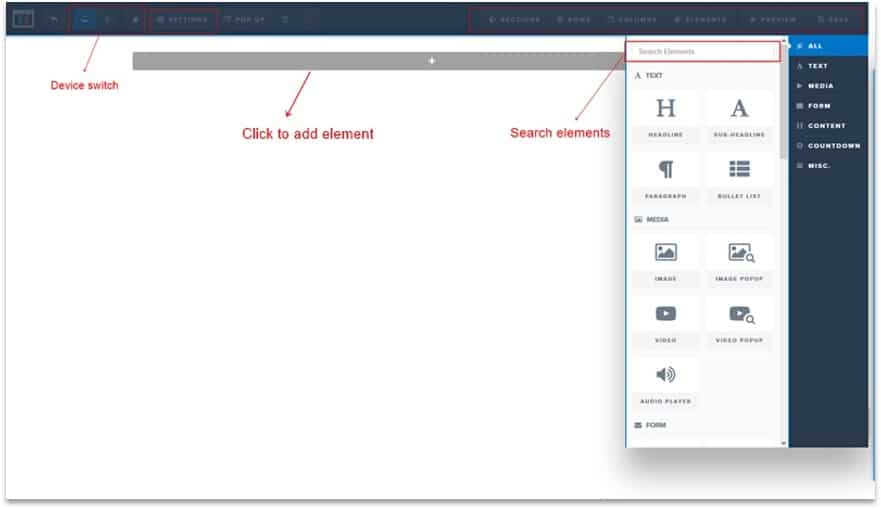
You can create fast, clone funnels, and tweak layouts until your offer screams “Buy now!” It’s not always pixel-perfect, but it’s built for speed and flexibility — especially when you’re testing offers or running paid traffic.
Kajabi’s page builder is clean, modern, and beautifully designed, but a little more “set in its ways.” You’re working with content blocks and pre-set layouts, and while it looks great, you don’t get as much creative control.

It’s simple to use, which is excellent for beginners, but it’s not ideal if you’re trying to build highly optimized landing pages or test minor conversion tweaks.
When it comes to raw customization power, ClickFunnels is the clear winner. Kajabi’s editor is solid for clean designs, but ClickFunnels gives you the tools to go wild.
Landing Page Builder: Who Nails the First Impression?
Your landing page is like a digital handshake. It’s where your audience decides if they’re sticking around or bouncing. And in my world, that first impression needs to convert.
ClickFunnels lives for landing pages. It’s what the platform was built on. You get complete control over every section — headlines, CTAs, images, countdown timers, videos, forms — all optimized for speed and conversions.
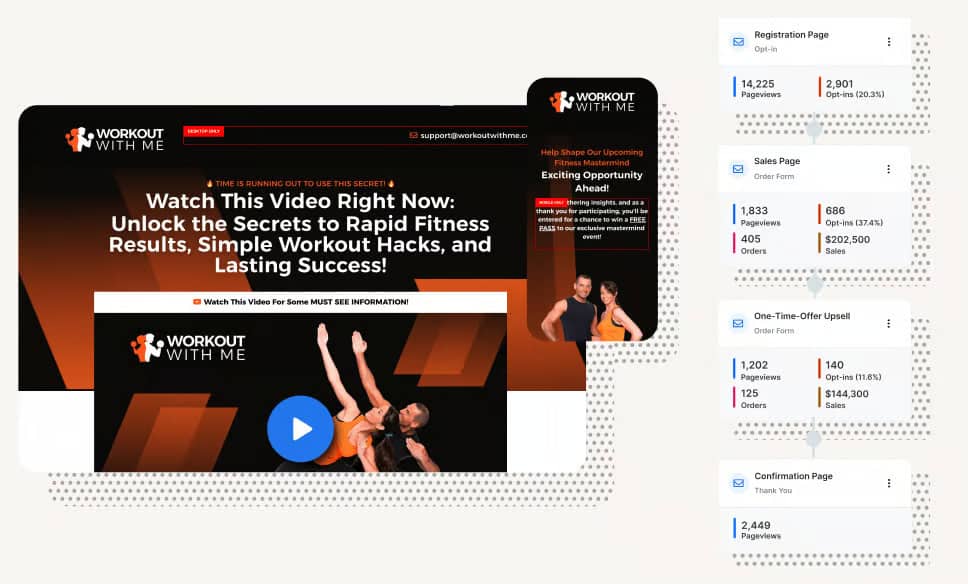
Whether you’re running ads or launching a flash offer, you can spin up high-converting pages in minutes. I’ve built hundreds over the years, and it’s honestly hard to beat when you’re in “launch mode.”
Kajabi also lets you build landing pages, and they look great. Sleek templates, clean design, responsive layouts — very on-brand for creators.
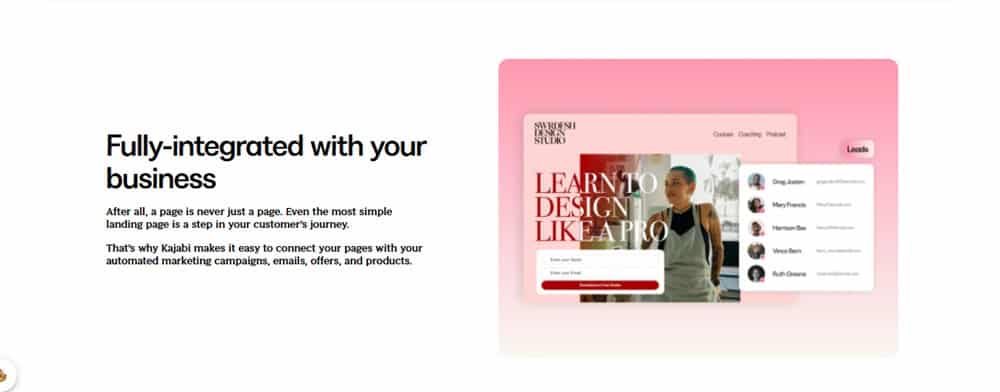
But when it comes to flexibility, deep customization, or testing fine-tuned conversions? It’s not quite on the same level as ClickFunnels. It’s more plug-and-play, which is excellent if you want something quick and pretty, but not ideal for hardcore marketing campaigns.
ClickFunnels is the better option if you want conversion-focused landing pages that you can launch, tweak, and split-test to death.
Website Builder + Unlimited Hosting: Who’s Built for the Long Game?
Funnels are flashy, but your website is home base. It’s where your brand lives, your blog grows, and your long-term business builds authority. Both Kajabi and ClickFunnels now offer website builders, but in their unique ways.
Kajabi provides a clean, modern site builder explicitly designed for creators. You can launch your entire website — homepage, about, blog, podcast, landing pages, all tied into your course or membership content.
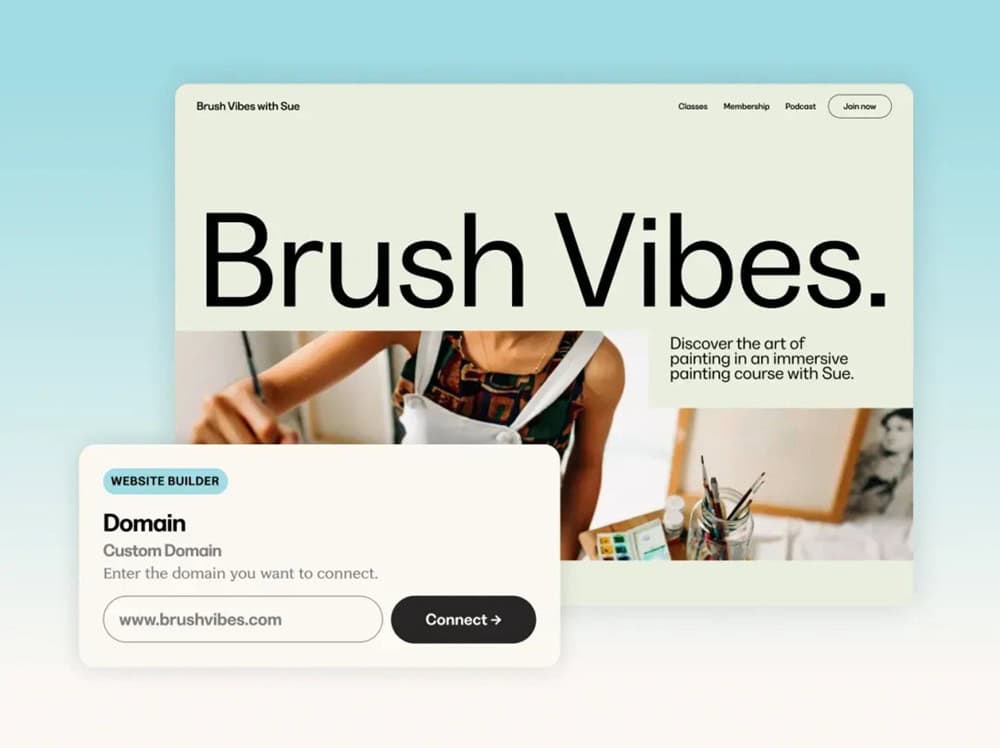
Hosting is unlimited, SSL is included, and everything runs on a smooth backend. It’s built for creators who want to own their platform without hiring a tech team.
With ClickFunnels, you can build full websites inside your account, not just funnels. You get unlimited pages, custom domains, global elements, themes, and even dynamic content.
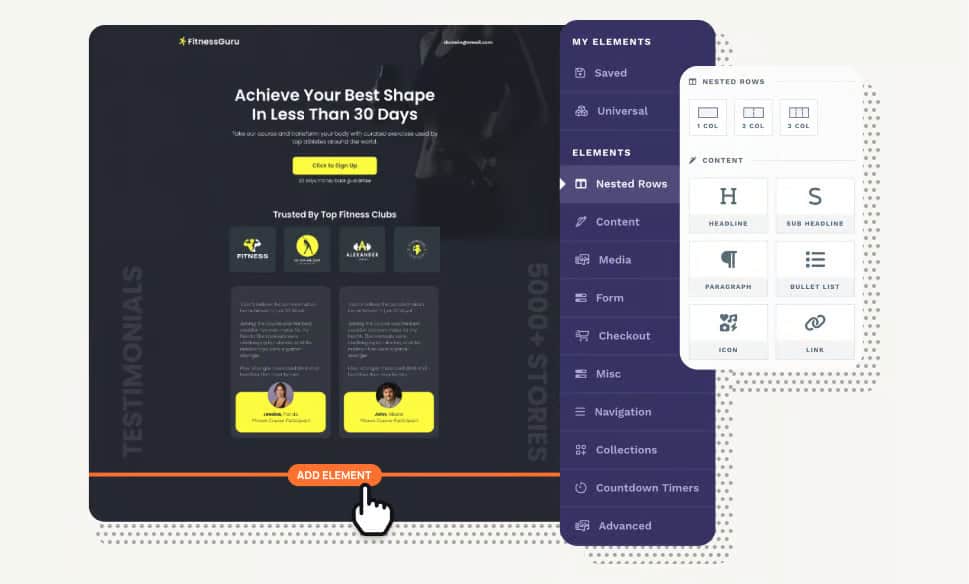
It’s more flexible than ever, and you can fully brand your site without needing a second platform. Plus, it’s backed by the same conversion-focused tools they’re known for.
This is a tie but depends on your focus. If you’re building a creator-focused brand with blogs, podcasts, and educational content, Kajabi still feels more tailored to your needs. But if you want a funnel-first site with deep marketing features baked in, ClickFunnels is a legit contender.
Advanced Email Marketing: Who Gives You More Firepower in the Inbox?
If you’re serious about nurturing leads, closing sales, and keeping your customers engaged long after they buy, email isn’t optional. It’s the engine behind the sale.
So the question is: who gives you more muscle under the hood?
Kajabi has come a long way with its built-in email tools. You can set up broadcasts, drip campaigns, event-based automations, and even tag users based on their behavior (such as clicking a link or completing a lesson).
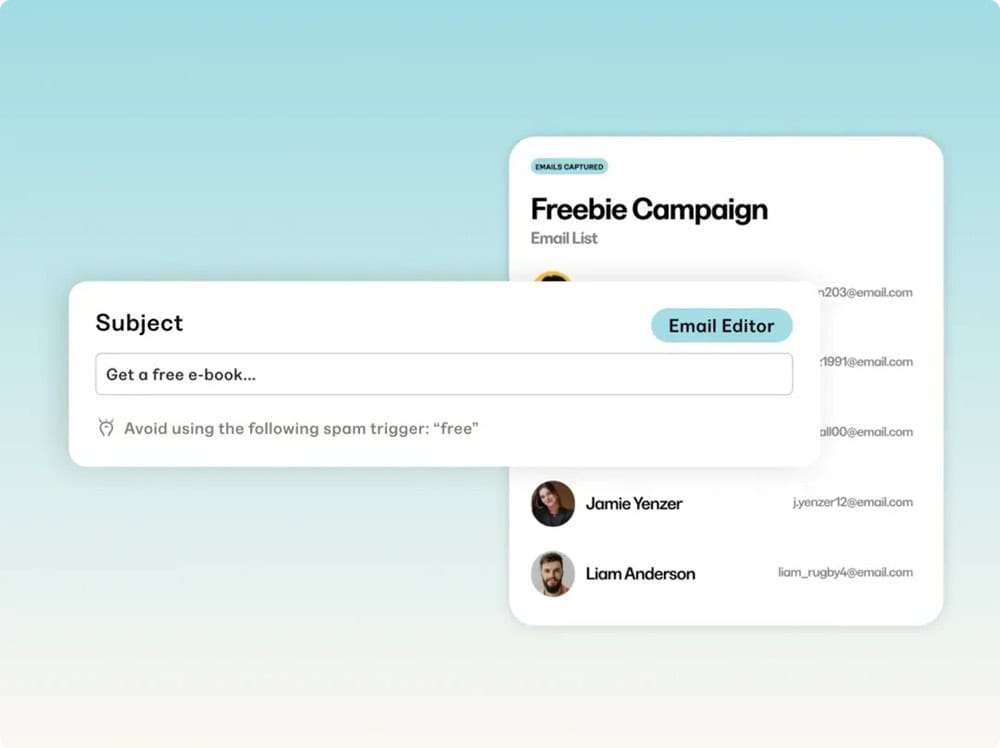
The visual builder is smooth and intuitive, and it integrates directly with your products, offers, and funnels.
Additionally, Kajabi provides you with real-time performance statistics, including open rate, CTR, and revenue generated, all tied to your customer journey.
ClickFunnels takes it a step further. You can build advanced automation flows triggered by page visits, purchases, time delays, or even SMS replies.
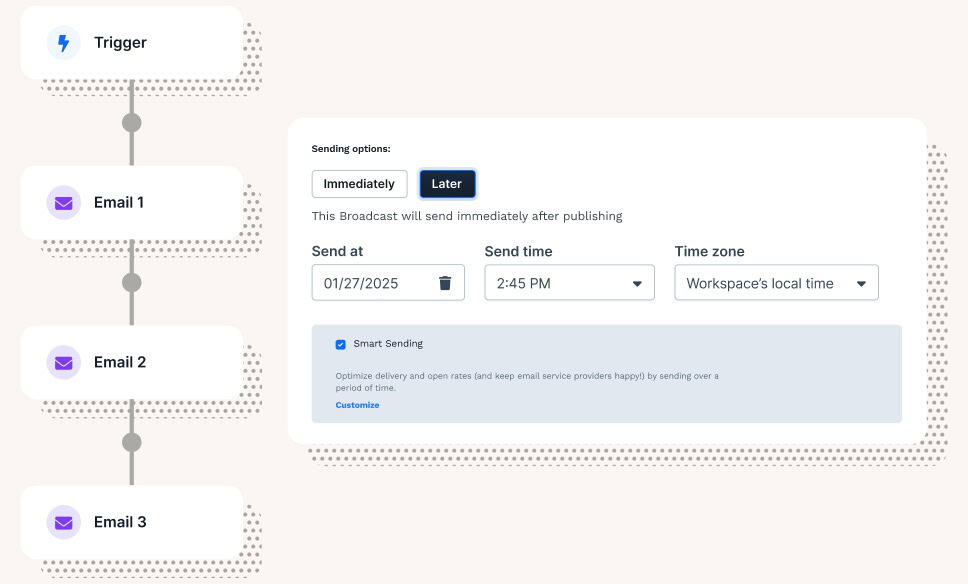
It supports true multi-channel marketing: email, text, and desktop notifications — all personalized and behavior-based. It’s more complex, but way more powerful if you’re into deep segmentation, re-engagement campaigns, or cross-selling like a pro.
ClickFunnels is best for advanced, multi-step, behavior-triggered campaigns across multiple channels.
Template Library: Who Helps You Launch Faster (Without Designing from Scratch)?
Look, not everyone wants to start with a blank canvas. Sometimes, you want to plug in your content and hit publish, without spending three hours moving buttons around.
ClickFunnels is a template beast. It’s built around pre-designed, high-converting funnels — for everything from lead magnets and webinars to product launches and course sales.

You’ll find numerous templates optimized for conversions, featuring proven copy layouts and an innovative design structure.
And if you ever feel stuck? The marketplace is also packed with user-generated funnels. It’s a goldmine for fast launches and inspiration.
Kajabi, while sleeker and more modern, offers fewer templates, particularly in the areas of funnels and sales campaigns.

You’ll get polished designs for websites, course pages, and pipelines, and they’re beautifully branded right out of the box. But there’s less variety overall. It’s more curated than extensive.
Remarkable for aesthetic simplicity, but not the best if you’re craving tons of options to test and tweak.
ClickFunnels takes the win for its deep, conversion-focused template library.
Smart Automations: Who Lets You Set It and Forget It?
Kajabi’s automation system is smooth, beginner-friendly, and tightly connected to its products. You can trigger actions based on things like form submissions, purchases, video views, course progress, and even quiz completions.
Want to tag someone who finishes a lesson? Automatically unlock a bonus module? Send a custom email when a student completes a course? Done. It’s powerful, but designed to be simple and creator-friendly.
ClickFunnels brings a more advanced automation engine. It supports granular logic and can trigger flows across multiple channels, including email, SMS, notifications, and even CRM actions.

You can go deep with segmentation, time delays, page behavior, conditional logic, and smart follow-ups that adjust based on user interaction. It’s more complex, but also more robust for serious marketers who want complete control over every step.
For true smart automation power, ClickFunnels takes the edge.
AI Tools: Who’s Using AI to Save You Time (Not Just for Hype)?
AI is everywhere right now, but let’s be realistic: most platforms simply slap the label “AI” on basic tools and call it innovation. What matters is: who’s using AI to make your life easier and your business run smoother?
Kajabi is ahead of the curve here. Their AI tools aren’t just impressive, they’re practical. With features like the AI Creator Hub, you can generate landing pages, email sequences, course outlines, and even product ideas in minutes.
Need to name your course? Build a pipeline? Write a sales page? AI does the heavy lifting, saving you hours. It’s built right into the workflow, not some clunky add-on.
Plus, it’s tailored to creators, not just generic content spit-outs.
ClickFunnels has also started adding AI tools, but they’re still catching up. The primary focus is funnel-building assistance and sales copy generation, helpful, but not as integrated or creator-specific.
You’ll still need to tweak and test more than you’d like manually, and right now, it feels more “extra” than essential.
Kajabi wins the AI battle with tools that are helpful and built into the everyday experience of creating, selling, and growing an online business.
WhiteLabel Abilities: Who Lets You Brand It Like It’s 100% Yours?
Kajabi gives you a semi-white label setup. You can connect your custom domain, brand everything visually, and remove most signs that you’re using Kajabi.
Your users won’t see Kajabi logos or platform branding, unless they go digging. But it’s not entirely white label; you still log in through Kajabi, and there are limitations if you’re trying to offer it as a service or build a platform for others.
ClickFunnels? They don’t just give you white label, they give you full-blown agency-style control (especially if you’re on the higher-tier plans).
You can customize domains, sub-accounts, client workspaces, and even resell funnels under your brand. It’s built for people who want to launch their own funnel business, not just use the software for themselves.
If you’re building funnels for clients, managing multiple accounts, or want to create your own branded experience from top to bottom, ClickFunnels gives you way more control.
Mobile App: Who Lets Your Business Travel with Your Audience?
Let’s face it, people are glued to their phones. If your customers can’t access your content on the go, you’re leaving money (and engagement) on the table.
A solid mobile app isn’t just a “nice to have” anymore; it’s part of the experience.
Kajabi crushes it here. They offer a free, beautifully designed mobile app for your customers.
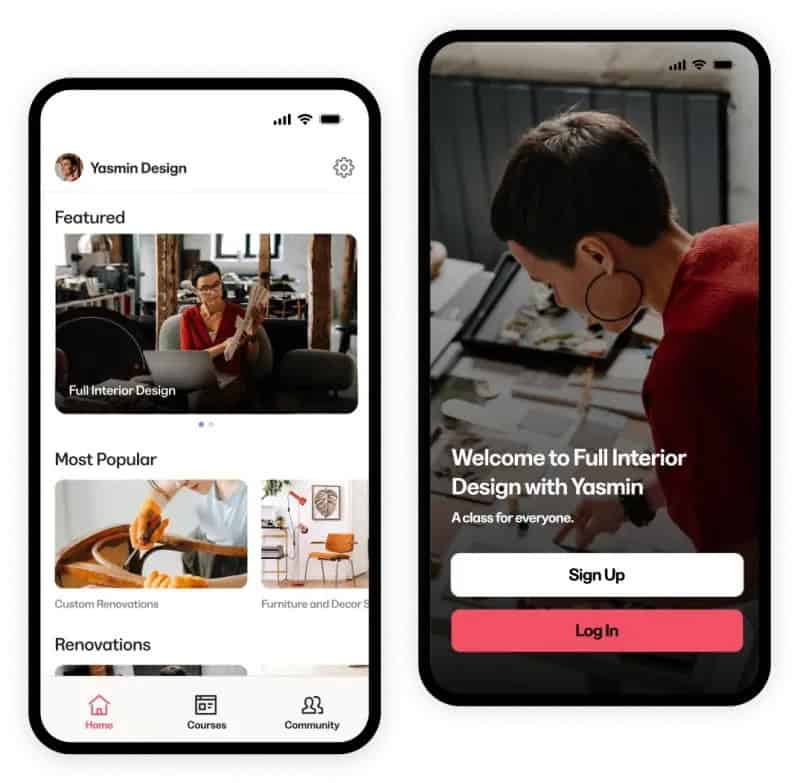
Whether you’re selling courses, coaching programs, or memberships, your students can log in, stream lessons, download content, and engage with your community right from their phone.
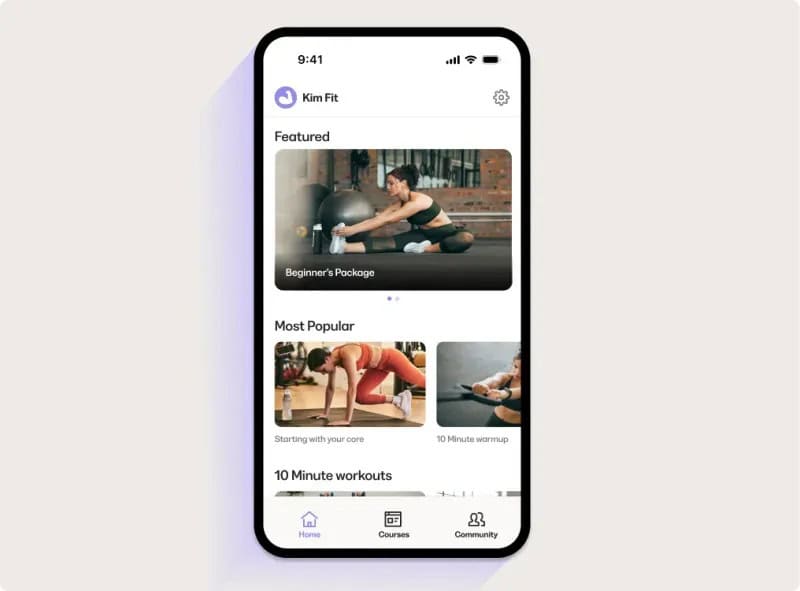
And the best part? It’s branded with your name, not Kajabi’s. Clean, simple, and super user-friendly. It makes your brand feel legit and accessible anywhere, anytime.
ClickFunnels? No official mobile app for your users. Sure, your funnel pages are mobile-responsive, and they do a solid job on mobile browsers, but there’s no standalone app where customers can access your membership content or courses on the go.
If mobile accessibility is a big part of your strategy, this could be a significant limitation.
Kajabi wins this round by a mile as ClickFunnels does not have a mobile app.
Affiliate Management: Who Helps You Build an Army of Promoters?
If you’ve ever had someone say, “Hey, can I promote your course and get a cut?”, congrats, you’ve met your first affiliate.
But managing affiliate links, payouts, and tracking manually? Total headache. You need a system that does it for you, and does it right.
ClickFunnels built its affiliate system for serious marketers. It enables you to create comprehensive affiliate programs, including custom commission plans, multiple tiers, tracking dashboards, individual links, and even gamification.
I’ve personally used it to run affiliate contests and reward top performers. It’s flexible, scalable, and integrated directly into your funnels. Once you’ve got your program dialed in, it runs itself.
Kajabi offers built-in affiliate tools too, and they’re solid — just more streamlined. You can set commission percentages, assign affiliates to offers, track sales, and automate payouts.
It works great if you’re running a simple course or product launch. However, it lacks advanced features such as multiple tiers, performance tracking per funnel step, or split commission logic.
If you’re serious about building a revenue-driving affiliate army, ClickFunnels is the clear winner.
Shopping Cart System: Who Makes It Easy for People to Buy (and Buy More)?
There’s nothing worse than having someone ready to buy… only to lose them to a clunky, confusing checkout process. A smooth shopping cart isn’t just a “nice touch” — it’s how you make money while you sleep.
Kajabi provides a clean and straightforward checkout experience. It’s fast, mobile-optimized, and distraction-free.
Plus, their new Kajabi Payments feature (U.S. only for now) lets you ditch Stripe and PayPal altogether — managing refunds, tracking payouts, and viewing revenue all from inside your dashboard. It feels modern, polished, and creator-friendly.
ClickFunnels takes a more aggressive, conversion-obsessed approach — and it shows. Their cart system is fully customizable, with one-click upsells, downsells, bump offers, and split testing built in.
Want to create a sales sequence where the buyer adds one product, then gets hit with two more offers before reaching the thank-you page? That’s ClickFunnels’ bread and butter. It’s perfect if you’re focused on maximizing average order value.
ClickFunnels wins this round.
1-Click Upsells, Downsells & Order Bumps: Who Helps You Boost Revenue Without Lifting a Finger?
This is where the real money is made. It’s not just about getting the sale; it’s about what happens after someone clicks “Buy.” Want to instantly double your revenue without doubling your ad spend? Say hello to upsells, downsells, and order bumps.
ClickFunnels is the master of this game. You can create ultra-customized sales flows with 1-click upsells, downsells, and pre-checkout bumps that feel natural — not pushy.

Someone buys a $49 course? Hit them with a $97 coaching upsell after the sale. They say no? Offer a $47 downsell. You control the logic, timing, and design. And the best part? It’s all seamless. No re-entering info. No friction. It’s like having a cash machine built into your funnel.
Kajabi recently added support for upsells and order bumps — and they work well for simple product flows.
You can offer upgrades at checkout or after a purchase, and the interface is clean and easy to manage. But it’s still not as flexible. You can’t go as deep with conditional logic or offer stacking. It’s built more for light boosting than full-blown funnel wizardry.
This one’s a no-brainer. ClickFunnels excels in revenue-maximizing add-ons.
A/B Testing: Who Lets You Test What Works (Instead of Just Guessing)?
ClickFunnels is built for this kind of optimization. You can A/B test almost anything, headlines, buttons, layouts, entire pages, and set traffic splits to see what performs best.
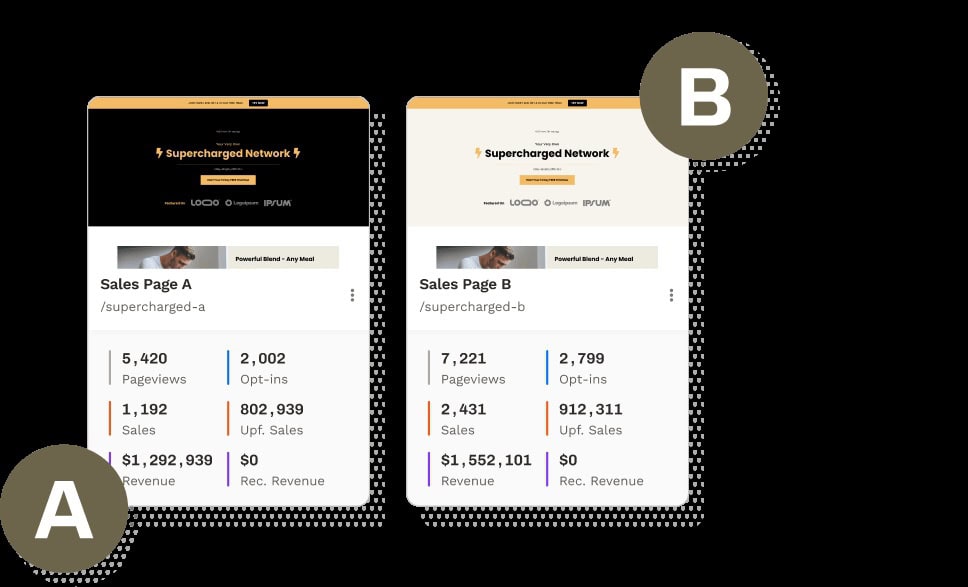
It’s fast, visual, and powerful. I’ve used it to double conversion rates on pages that I thought were solid… until the data said otherwise. If you’re a marketer who lives by the numbers, this feature is gold.
Kajabi, surprisingly, doesn’t offer native A/B testing yet. No built-in tools to split test landing pages or sales funnels.
If you want to test two versions of a page, you’d have to manually duplicate and track performance yourself, which defeats the whole point. It’s a significant gap, especially if you’re serious about optimizing your conversions.
If you want to optimize like a pro, ClickFunnels wins easily in this regard.
Podcast Creation & Hosting: Who Gives Your Voice a Home?
Kajabi knocks this out of the park. They let you create, host, and publish your podcast directly from your dashboard — no third-party apps or RSS wrangling required.
You can host both free and paid podcasts, manage episodes, track performance, and even connect them to your courses or memberships.
Want to turn your podcast into a premium subscription? Boom. Done. It’s built right in, and your audience can listen from the Kajabi mobile app, which makes it even smoother.
ClickFunnels? No built-in podcast tools. If you want to run a podcast, you’ll need to host it elsewhere (such as Spotify, Buzzsprout, or Anchor), and then manually link to it from your funnel or blog. It’s doable, sure, but it’s more of a patchwork than a platform.
If podcasting is part of your brand strategy, and it probably should be, Kajabi makes it easy, seamless, and profitable.
Blogging: Who Helps You Build Long-Term Organic Traffic?
Kajabi has native blogging built in, and it’s solid. You can create SEO-optimized posts, categorize content, add images, and even link directly to your offers or courses.
It’s not WordPress-level deep, but for most creators, it gets the job done without the overwhelm. Additionally, the blog is integrated directly into your Kajabi website, allowing you to blend content with marketing seamlessly.
ClickFunnels also offers blogging, and yes, it works. You can create blog posts, use dynamic templates, and keep everything under one roof. But here’s the thing: it still feels like a funnel tool trying to be a blog platform.
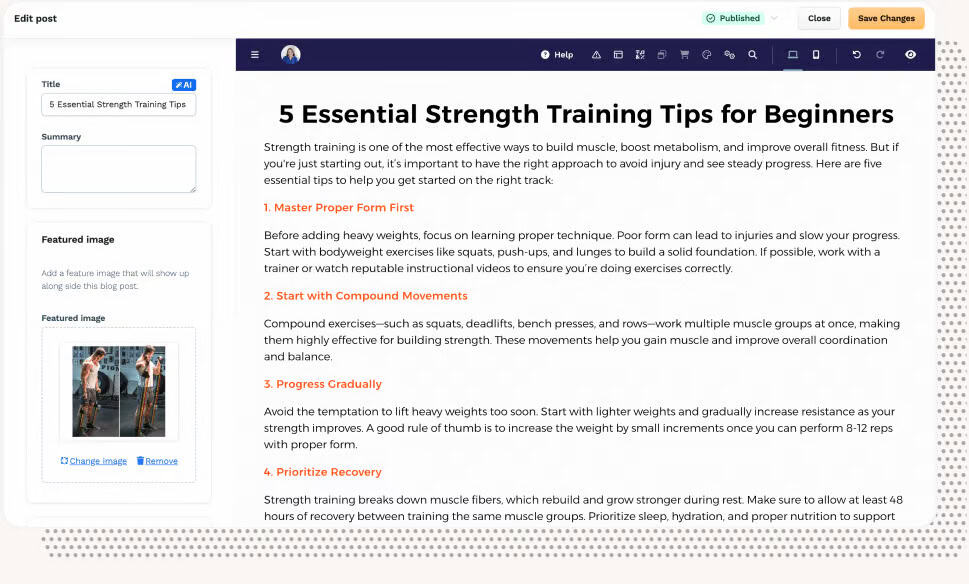
It lacks finesse in terms of formatting, SEO options, and long-form content flow. It’s getting there, just not Kajabi-smooth yet.
If blogging is part of your organic marketing game, Kajabi makes it easy and clean.
Quizzes & Surveys: Who Helps You Learn From (and Engage) Your Audience?
Quizzes aren’t just fun, they’re extremely powerful. Whether you’re qualifying leads, segmenting your audience, or just adding a little interaction to your course, quizzes can be the secret sauce to deeper engagement and better conversions.
Kajabi delivers here. You can easily create quizzes, assessments, and surveys right inside your course or landing page. Want to test knowledge at the end of a module? Done. Collect feedback after a purchase? Easy.
Plus, you can trigger automations based on quiz results, like tagging users, unlocking bonus content, or enrolling them in a different product. It’s baked right into the learning experience, and it works beautifully.
ClickFunnels also has a built-in survey tools. You can drop a survey form right into a funnel to collect leads, segment users, or even pre-qualify them before the next step. It’s simple but effective, especially for lead-gen funnels.
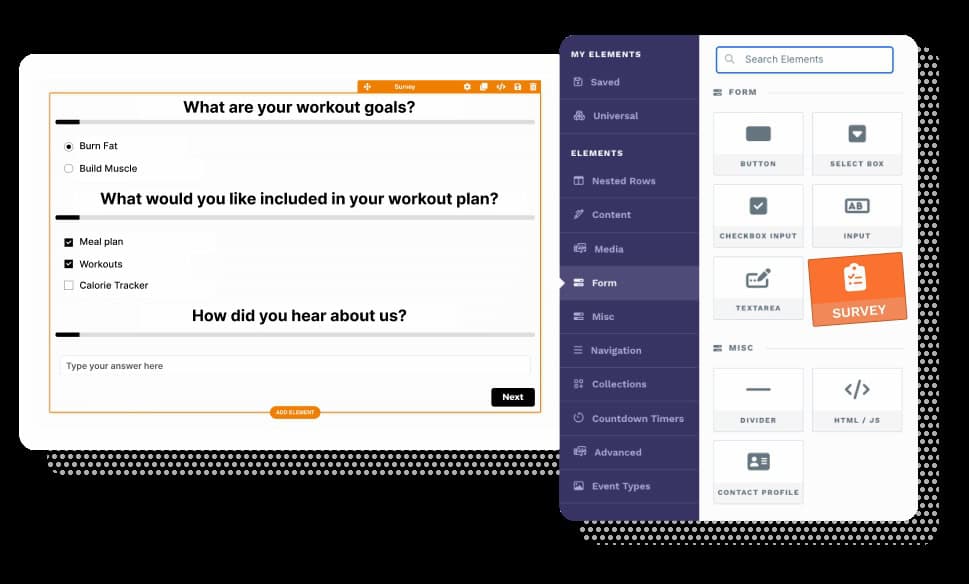
However, it’s not as connected to post-purchase automations or course logic the way Kajabi’s quiz system is. Think more “funnel tool,” less “learning feature.”
Kajabi wins hands down when it comes to creating interactive, automated quizzes and surveys.
Video Hosting: Who Lets You Share Videos Without Playing the Tech Juggle?
If you’re selling a course, coaching, or any digital product, video is everything. But juggling Vimeo links, YouTube settings, and privacy toggles? No thanks. You want a platform where you upload and go.
Kajabi makes this ridiculously easy. You can upload videos directly into your courses, landing pages, emails, or pipelines — and they’re hosted inside Kajabi.
No need for third-party tools. The player is sleek, fast, and mobile-friendly, featuring built-in engagement tools such as progress tracking, autoplay, and completion triggers. It feels like a true video learning platform, not just a hosting hack.
ClickFunnels? It depends. You can upload videos with their internal hosting, and it’s decent — especially for short-form, sales-focused videos.
But if you’re running full-length lessons or high-volume video content, you’re often better off integrating with something like Wistia or Vimeo. And that means extra cost, extra setup, and more moving parts.
If you’re serious about video-based content delivery, Kajabi wins this one with ease.
Build a Community: Who Helps You Create More Than Just Customers?
Let’s be honest, people don’t just want content. They want a connection. They want to ask questions, share wins, vent struggles, and feel like they’re part of something bigger than just a course.
Kajabi gets this. Their Community feature is like a private Facebook group — but built into your site, with zero distractions or algorithm nonsense. You can create spaces for discussion, organize by topic or course, post announcements, and even go live.
Members can interact, comment, and engage right from their dashboard or the Kajabi mobile app. It’s powerful, especially if you’re coaching or building a tribe around your content.
ClickFunnels, meanwhile, doesn’t have a native community feature. If you want to create a community vibe, consider embedding a third-party tool like Circle or Mighty Networks, or simply linking to a private Facebook group.
Not terrible, but it’s extra work, more tech, and doesn’t feel as integrated into the experience.
If your business model includes engagement, connection, or coaching, Kajabi takes the win.
Analytics: Who Gives You the Data That Matters?
There’s nothing more frustrating than launching something and then… crickets. Or worse — some sales, but no clue why. That’s where analytics comes in. Not just vanity metrics — real, actionable insights.
Kajabi provides a clean, easy-to-understand dashboard that covers the essentials: revenue, opt-ins, page views, course progress, offer performance, and email statistics.
You can see how your students are engaging, which emails are converting, and where your sales are coming from, all without needing a degree in data science. It’s perfect if you want insights without the overwhelm.
ClickFunnels? It goes deeper. You get full funnel analytics, track every step, see where users drop off, test different variations, and optimize in real time.

With A/B testing built in and detailed metrics like EPC, CTR, and time-on-page, it’s designed for marketers who want to extract every drop of performance from their campaigns. The dashboard isn’t as pretty, but the data is pure gold if you know what to look for.
ClickFunnels takes the lead here for marketers who thrive on granular funnel data and real-time testing.
Integrations: Who Plays Nicely With the Rest of Your Tech Stack?
Let’s be honest, no platform lives on an island. Whether it’s your email list, webinar software, CRM, or payment processor, your tools must be able to communicate with each other. So the big question is: who makes that easier?

Kajabi offers a comprehensive list of native integrations, including Stripe, PayPal, ConvertKit, ActiveCampaign, Zapier, and Calendly, all built right into the dashboard.
It covers most of what a coach or course creator would use on a daily basis. And with Kajabi’s API, you can take things further if you want more custom functionality. It’s not overwhelming, but it’s well-curated for creators who wish to smooth workflows.
ClickFunnels swings big here. It integrates with a vast array of tools, ranging from CRMs and webinar platforms to fulfillment services and ad tools.

You also receive API access, robust Zapier support, and flexible webhook options for developers or advanced users.
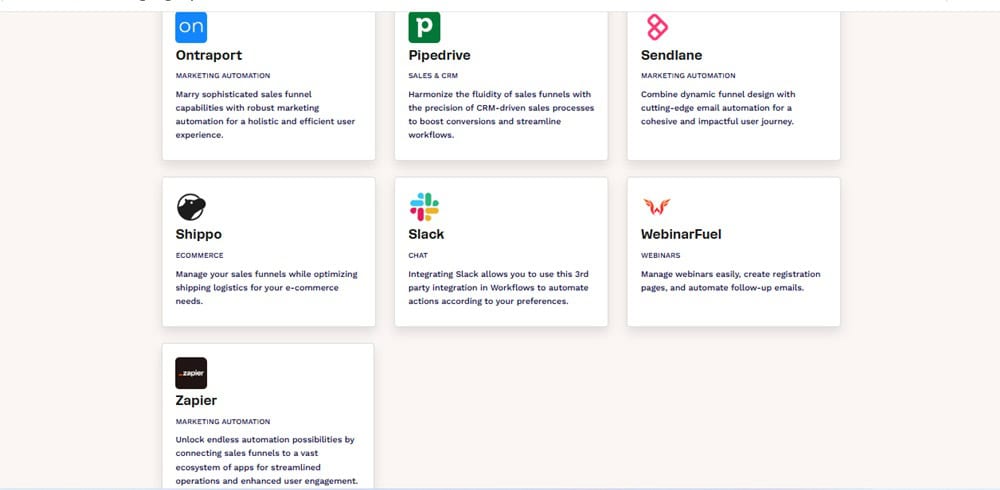
Whether you’re connecting to Mailchimp, HubSpot, Shopify, or a custom database, ClickFunnels makes it work, especially if you’re running complex campaigns or client funnels.
For sheer volume and flexibility, ClickFunnels wins this one.
Knowledge Base: Who Helps When You Get Stuck at 2 AM?
Kajabi delivers a clean, well-organized knowledge base with step-by-step guides, screenshots, and tutorials for literally every feature. From setting up your first product to customizing automations, it’s all clearly written for non-techies.
Plus, they incorporate videos, checklists, and even full-onboarding courses. If you’re someone who likes to DIY your way through problems, Kajabi’s support hub feels like a well-lit path.
ClickFunnels also has a vast knowledge base, featuring tutorials, support articles, videos, and walkthroughs for both beginners and advanced users. That said, it can feel more scattered.
Some guides are outdated (especially between versions 1.0 and 2.0), and you may find yourself bouncing between help documents and YouTube to piece things together. Still helpful — just less polished.
Kajabi wins this one for clarity, ease, and depth. Their knowledge base is designed for creators who want to find answers quickly and return to work.
Active Support: Who Shows Up When You Need Help?
When something breaks right before a launch (and it will), the last thing you want is an AI chatbot loop or a 48-hour email response that tells you to “check the help docs.” You need real support. From real humans. Fast.
Kajabi shines here. They offer 24/7 live chat support on most plans, and the reps are helpful, not just script-reading robots. I’ve had situations where I needed a fix at odd hours, and they got me back up quickly without the usual back-and-forth drama.
Additionally, they provide email support and live onboarding sessions to help you get started. It feels like they want you to succeed.
ClickFunnels also offers live chat support, but only on higher-tier plans. And while their support team can be helpful, the experience can feel hit-or-miss.
Sometimes, you’ll get a quick and precise answer; other times, you’ll be sent a link to an article that doesn’t solve your problem. And if you’re on a lower-tier plan? You’re mostly limited to email support or attempting to DIY through the knowledge base and community.
For fast, reliable, and human help, Kajabi takes the win. Whether you’re launching your first product or fixing something at midnight, they show up.
Kajabi vs ClickFunnels Pricing Review
ClickFunnels Pricing: What You’re Paying For (and If It’s Worth It)
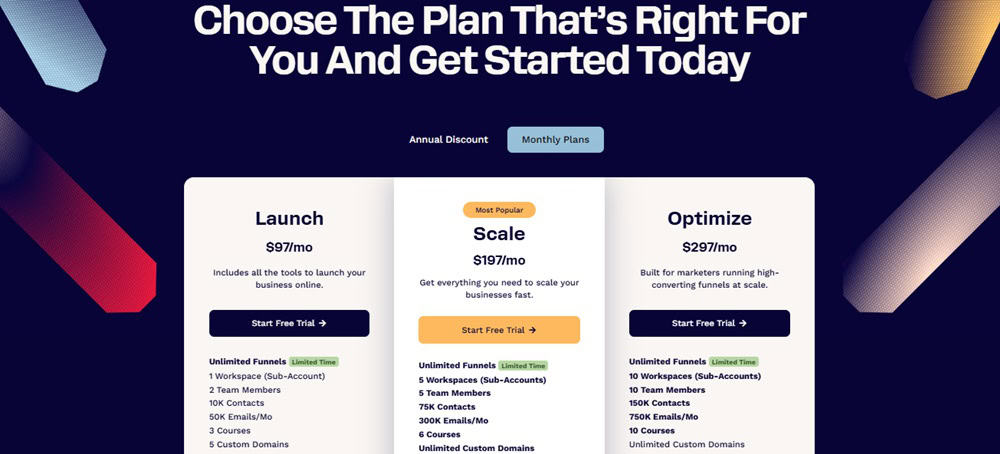
ClickFunnels doesn’t play the “hide your pricing behind a demo” game, they’re pretty upfront about it.
However, even with the listed numbers, choosing the right plan can still feel like trying to pick the right tool from a giant toolbox. I’ve been through every tier over the years, so let me break it down in a way that helps you make an informed decision.
ClickFunnels offers four pricing tiers: Launch, Scale, Optimize, and Dominate. Each one is designed to match your stage of growth — from building your very first funnel to running a high-volume business or agency.
Launch Plan
If you’re starting, the Launch plan gives you the basic. It costs $97/month when billed monthly and $81/month when billed annually).
This plan enough to get your first funnel live, test offers, and start collecting sales without drowning in features.
Scale Plan
Step up to the Scale plan and you’ll gain more contacts, emails, and flexibility. It costs $197/month when billed monthly and $164/month when billed yearly.
This is where things start getting powerful, you unlock advanced automations, better analytics, and more workspace options if you’re juggling multiple projects or brands. Honestly, this is the tier I’ve used the most, it hits that sweet spot between value and firepower.
Optimize Plan
Optimize is where things get serious at $297/month when billed monthly and $248/month billed annually.
With this plan, you’re getting features tailored for teams, full API access, deeper segmentation, and higher email volume. This is for people running ads at scale or managing complex sales funnels across multiple offers.
Dominate Plan
Then there’s Dominate, this is an annual only plan.
It costs $5,997/year and is designed for power users, agencies, or creators who require white-glove support, private onboarding, and the kind of scalability that most people never need.
Tiers Breakdown
Every plan comes with funnel building, automation, email marketing, AI content tools, and unlimited pages — what changes is the scope of your customization.
You gain more contacts (from 10K to over 400K), higher email sending limits, and increased workspace and team member flexibility as you scale. Even the AI tools scale, with plans offering from 1 million to 10 million generated words.
Now, here’s something I love: you’re not locked in mindlessly. You get a 14-day free trial, plus a 30-day money-back guarantee, which means you have about six weeks to build, test, and really see if ClickFunnels is the right fit.
And if you’re in this for the long haul, opting for annual billing saves you about 16%, which adds up quickly.
So, is it worth it? If you’re serious about using funnels, email, and automations to grow your business, then yes, ClickFunnels can easily pay for itself if you use even half of what’s in your plan.
The key is choosing the right tier for your current stage and leveling up as your business grows.
Kajabi Pricing: The Real Cost of Replacing 5 Tools With One
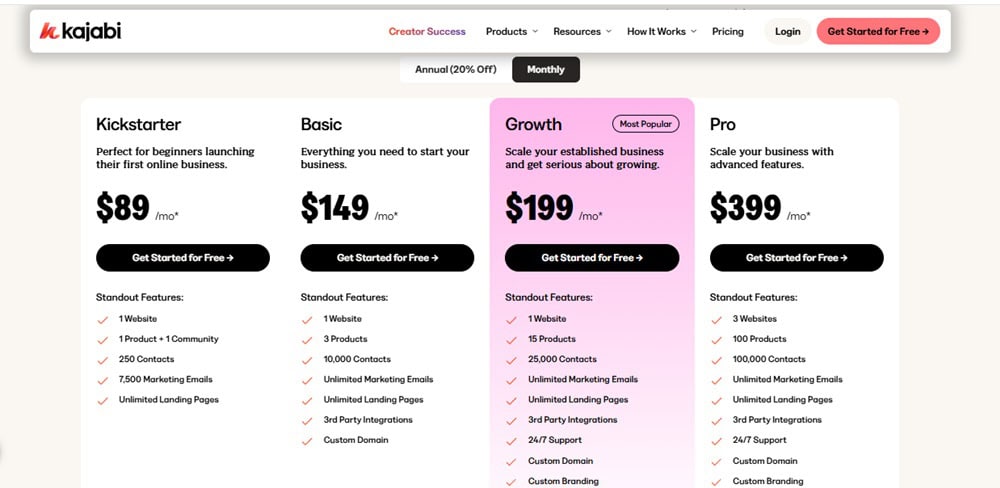
Let’s talk money, because if you’re anything like me when I first started, you’re wondering: Is Kajabi worth it?
And the short answer? If you want everything under one roof, it just might be your smartest investment yet.
Kajabi isn’t the cheapest tool on the block, but that’s because it’s not “just” a course platform. It replaces your website builder, email software, automation tool, funnel builder, video host, landing page builder, and, yes, even your podcast host if you use that feature.
When you look at it like that? Suddenly, the pricing doesn’t feel so wild.
Kajabi gives you four plans, all with the same promise: no tech headaches, no duct-taping platforms together.
Just one dashboard to run your whole business.
KickStarter Plan
This plan costs $89/month billed monthly or $71/month billed yearly.
This plan is great if you’re brand new and need the basics — 1 product, one community, a clean website, 250 contacts, and some solid automation to get you going.
Just enough to get scrappy and make your first sales.
Basic Plan
This plan costs $149/month when billed monthly or $119/month with annual billing.
This plan is perfect if you’re past “beginner” and starting to build real momentum. You get three products, 10,000 contacts, unlimited emails, and access to third-party integrations. Think of this as your “getting serious” plan.
Growth Plan
This plan costs $199/month when billed monthly or $159/month when billed yearly.
This is where most creators (including me) end up. You unlock advanced automations, remove Kajabi branding, gain access to the affiliate program, and increase your product limit to 15 and your contact limit to 25,000.
You also get 24/7 live chat support, and trust me, that alone has saved my neck more than once.
Pro Plan
This plan costs $399/month when billed monthly or $319/month when billed yearly.
This plan is best if you have a team, multiple offers, and a growing audience, this provides you with three sites, 100 products, 100,000 contacts, and complete code control. It’s the VIP lane for scaling hard.
What It Feels Like to Pay for Kajabi
Honestly? At first, I winced. Spending $149+ a month on anything felt like a stretch. But once I realized I could cancel my email tool, ditch my landing page builder, and stop paying for video hosting, Kajabi was saving me time, sanity, and money.
The platform works. It’s clean, smooth, and designed for people like us — creators, coaches, experts, do-it-yourselfers who want to share value and get paid without getting stuck in tech purgatory.
And if you’re not 100% sure? You can test it out with a free trial and get a feel for what it’s like to have your business under one roof. No risk. Just clarity.
How do you Integrate Kajabi with ClickFunnels?
The best part of this whole comparison is that you can integrate ClickFunnels with Kajabi or Kajabi with ClickFunnels in a number of ways, using ClickFunnels as the funnel and lead generation engine and Kajabi as the content delivery engine.
How does that sound?
There’re are two options for integrating both software:
First Option…
Here you can use ClickFunnels to build out your complete sales funnel and order processes (lead generation page, sales page, automation, payment processing, and collection).
Then you will just deliver the product on Kajabi using the member’s area platform over there. In essence, the access to the membership site would be delivered automatically upon completion of transactions on ClickFunnels.
Second Option…
You could also use ClickFunnels primarily for the front-end of your sales, taking advantage of the powerful sales funnel automation, then exploit Kajabi’s payment processing and content delivery features.
Here ClickFunnels just handles the entire prospects’ journey to the purchase level, then Kajabi does the rest.
Final Thoughts: So, ClickFunnels or Kajabi?
After years of using both platforms — testing, building, launching, failing, tweaking, and winning, here’s the truth:
ClickFunnels is for the marketer. If you live and breathe funnels, love experimenting with upsells, downsells, A/B testing, and squeezing every drop out of a sales page — this is your playground.
It’s built for aggressive growth, high-converting offers, and rapid scaling. If you want total control over the customer journey from click to checkout, ClickFunnels provides you with the necessary power tools.
Kajabi, on the other hand, is designed for creators. It’s clean, polished, and designed for people who want to teach, serve, and build genuine connections.
If you’re focused on delivering a premium learning experience, growing a community, and running your business with as little tech drama as possible, Kajabi is your home.
Here’s what I’ll say: You can build a wildly successful business on either platform. The best choice depends on your style, your goals, and where you are in your journey.
And hey, if you’re still unsure, try both. Test the waters. You’ve got free trials, money-back guarantees, and nothing to lose by experimenting.
FAQs on Kajabi vs ClickFunnels
What is the difference between Kajabi and ClickFunnels?
Kajabi is built for course creators and educators. ClickFunnels is designed for marketers who focus on sales funnels and conversions.
Which is more expensive, ClickFunnels or Kajabi?
ClickFunnels starts at $97/month, while Kajabi costs $89/month (both are billed monthly). This means ClickFunnels is more expensive. Both offer 14-day free trials.
Can you integrate ClickFunnels with Kajabi?
Yes! You can connect them using Zapier or webhooks — build funnels in ClickFunnels, deliver content in Kajabi.
Which is better for building funnels, Kajabi or ClickFunnels?
ClickFunnels is better for building funnels, hands down. It’s more flexible, advanced, and built specifically for funnel optimization.
Which is better for course creation?
Kajabi is better for course creation. It offers a smoother, feature-rich experience for both creators and students.
Can either Kajabi or ClickFunnels replace my website?
Yes, ClickFunnels and Kajabi can replace your website. Kajabi is better for full websites and blogs. ClickFunnels works best for funnel-focused sites.
Checkout Other ClickFunnels Comparison Posts:

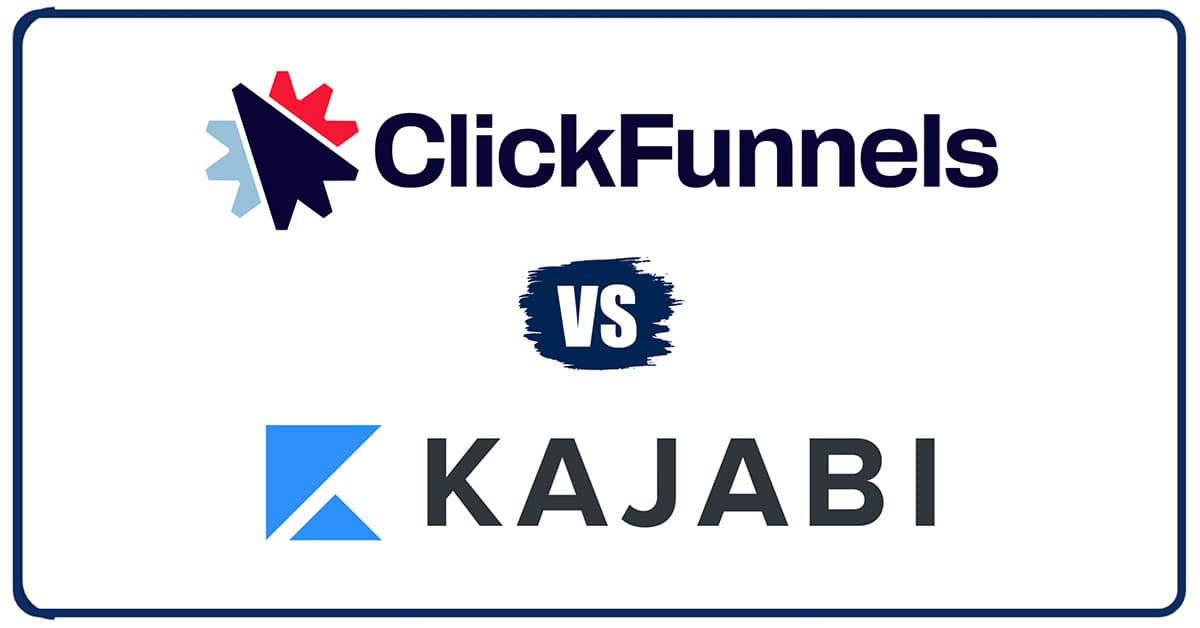


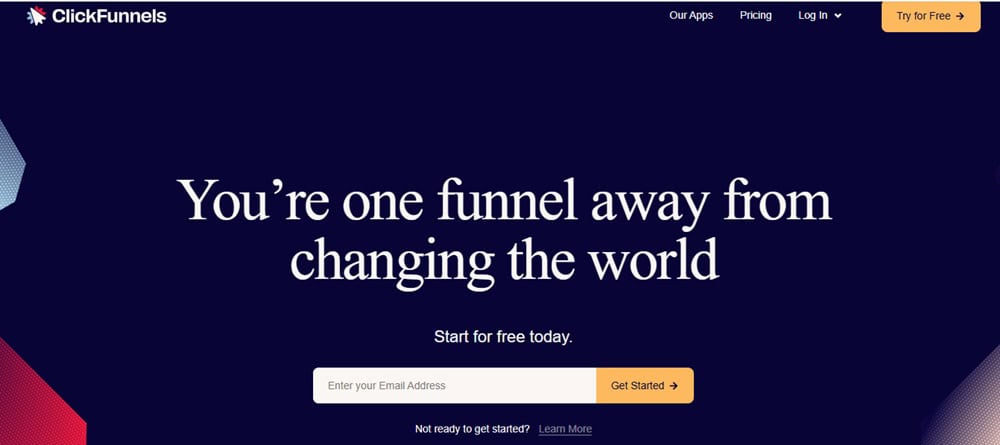

Thanks Khris
– this was very well written, and very helpful
Charley